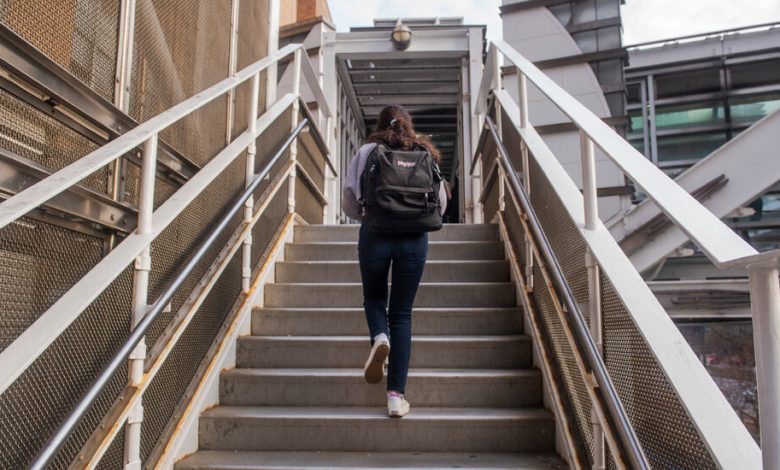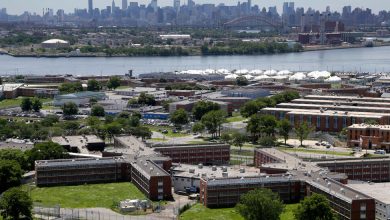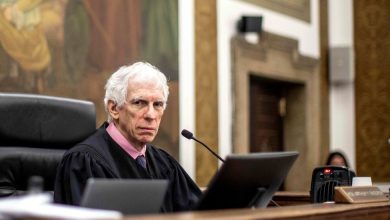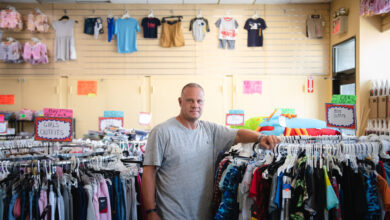New York Schools Weathered a Crisis. Now They Face a Fiscal Cliff.

Just a year ago, the outlook for New York City was bleak: The nation’s largest school system had lost 120,000 children in five years, and Mayor Eric Adams warned gravely, “We’re in a very dangerous place.”
But today, despite some continuing and intense struggles, the darkest projections seem to have been avoided. Public school enrollment is no longer in free fall, buoyed partly by migrant arrivals. Fears of a large-scale flight of middle-class families fleeing to charters or private schools have not come to pass. And at his recent State of Our Schools address, the schools chancellor was optimistic about the city’s trajectory.
Now, though, the system is barreling toward a steep new challenge: a huge fiscal cliff that could reduce the education budget by hundreds of millions of dollars. In some ways, the city’s situation mirrors a crisis looming for school districts all over the country. But a variety of factors have complicated the challenges for New York.
In the coming months, the mayor has said he may force all city agencies to reduce spending by up to 15 percent, citing the costs of caring for the influx of migrants who have overwhelmed the city’s homeless shelter system. The full cuts would shave some $2 billion from the Education Department’s budget.
The cuts would come as billions in federal pandemic stimulus dollars dry up next year, money that helped schools stave off the full consequences of enrollment declines.
Then, the system will face a legal mandate to lower its class sizes, requiring a billion-plus dollars in hiring costs.
The converging pressures threaten to worsen inequality across public schools and hinder progress on the Adams administration’s education initiatives. Many of the efforts funded by expiring federal aid — like hundreds of school social workers and new preschool special education seats — serve the system’s most at-risk children.
The public school system, a barometer of the city’s overall health, illustrates some of the broader issues facing New York as it tries to recover from the pandemic and prevent families, workers and businesses from leaving, while coping with punishing financial circumstances.
Last month, a coalition of more than 150 civil rights groups and youth organizations including Advocates for Children of New York wrote that the city lies “at a critical juncture,” and could see a “massive setback to public education” if it mishandles the moment.
“The stakes are enormous,” said Randi Levine, the organization’s policy director. “We’re always concerned that programs serving students from marginalized communities are the last to be funded — and the first to be cut.”
New York invests more in its students compared with other large cities, with higher per student spending that has risen significantly in recent years. More than a third of the city’s budget goes to the Education Department. But major disparities remain evident across the 32 local districts, and some worry those could deepen as an enormous federal windfall ends next fall.
Since 2020, New York has received more than $7 billion in aid, and like all districts, was required to spend at least 20 percent to aid students’ academic recovery from the pandemic. City fourth-grade reading and math scores dropped, mirroring similar declines in some other large cities, according to a major national test.
Across the country, some district leaders used much of their leftover funds for one-time projects like small group tutoring or buildings upgrades. But others spent big on less temporary initiatives. Now, they are staring down the expiration of stimulus dollars, enrollment losses and declining revenues in many states — or, as two school finance researchers put it, a “perfect storm of financial chaos.”
In New York, where relief funds were spent on a broad mix of services including many long-term programs, the drop-off may be less stark than in places like North Carolina and Texas, states with larger numbers of poor students and lower education spending.
New York’s popular free preschool initiative for 3-year-olds and full-day summer program, can help attract and retain families in an increasingly unaffordable city. But when expanding 3-K, former Mayor Bill de Blasio’s administration did not secure long-term funding, betting on the city’s economic recovery to close gaps. Now, both programs rely heavily on stimulus dollars, and their path forward remains uncertain.
The city has also seen soaring costs for children’s private school tuition. It is required to pay such tuition when public schools fail to serve students with disabilities, who make up a fifth of all pupils. If special education services worsen, the costs could run even higher.
The trade-offs illustrate the risk for school officials, budget watchdogs said. It has grown ever more important to convince families who remain in the system of the value of district schools. Making the wrong choices now could jeopardize efforts to retain the city’s working and middle class families, who work in critical sectors like the health and retail industries.
So far, school officials have not detailed a plan for the fiscal cliff. But they have repeatedly raised concern over a new state mandate for smaller class sizes, popular among teachers and parents. The move could cost up to $1.9 billion annually for hiring new teachers, some projections estimate, and a series of reports have also raised questions over whether potential benefits could be unevenly distributed across the system.
“We don’t want to have to cut anything,” said the schools chancellor, David C. Banks, while adding that “some wonderful programs” are “potentially on the chopping block.”
Still, experts said, some changes may be inevitable.
Before this fall, school budgets were not slashed for low enrollment. But about 45 schools where stimulus dollars make up a significant portion of their budgets could lose more than $630,000 if cuts are made, according to the city comptroller’s office, though projected enrollment declines could exceed the reality for some schools.
The next budget process may see intense fights for the City Council over well-regarded programs. NeQuan McLean, an elected parent leader in Brooklyn’s Bedford-Stuyvesant neighborhood, for example, said the district has at least four community schools whose on-site services — like counseling, clinics and adults classes — are funded through stimulus dollars.
“Do they now close down?” Mr. McLean asked, adding that the city would be “setting communities up for failure” by doing so.
In the coming years, school budget debates will probably place a fresh spotlight on disparities between parent-teacher associations, experts said. More than $13 million in annual funds raised separates the city’s wealthiest and highest-poverty districts, data shows, dollars that could go toward restoring art and music teachers, after-school programs or tutoring services. Some individual schools collect more than a million; others bring in nothing.
“What I worry about is that when districts start to propose some of these cuts, it becomes all- consuming,” said Marguerite Roza, a school finance expert at Georgetown University. “And what really needs to be all-consuming right now is getting kids back on track. It’s going to pull attention off of that.”
From Denver to Boston, more cities across the nation have begun to grapple with the unpopular prospect of school mergers or closures after enrollment declines, a hot button topic for families. In New York, officials have only pursued a handful of mergers.
But last year, some 140 district schools enrolled fewer than 175 children, enrollment data shows.
School consolidations may ultimately be a “difficult but necessary process” for the city, said David C. Bloomfield, an education law and policy professor at Brooklyn College and the City University of New York Graduate Center.
As for the Adams administration, he asked: “Are they ready for that political hornet’s nest?”




